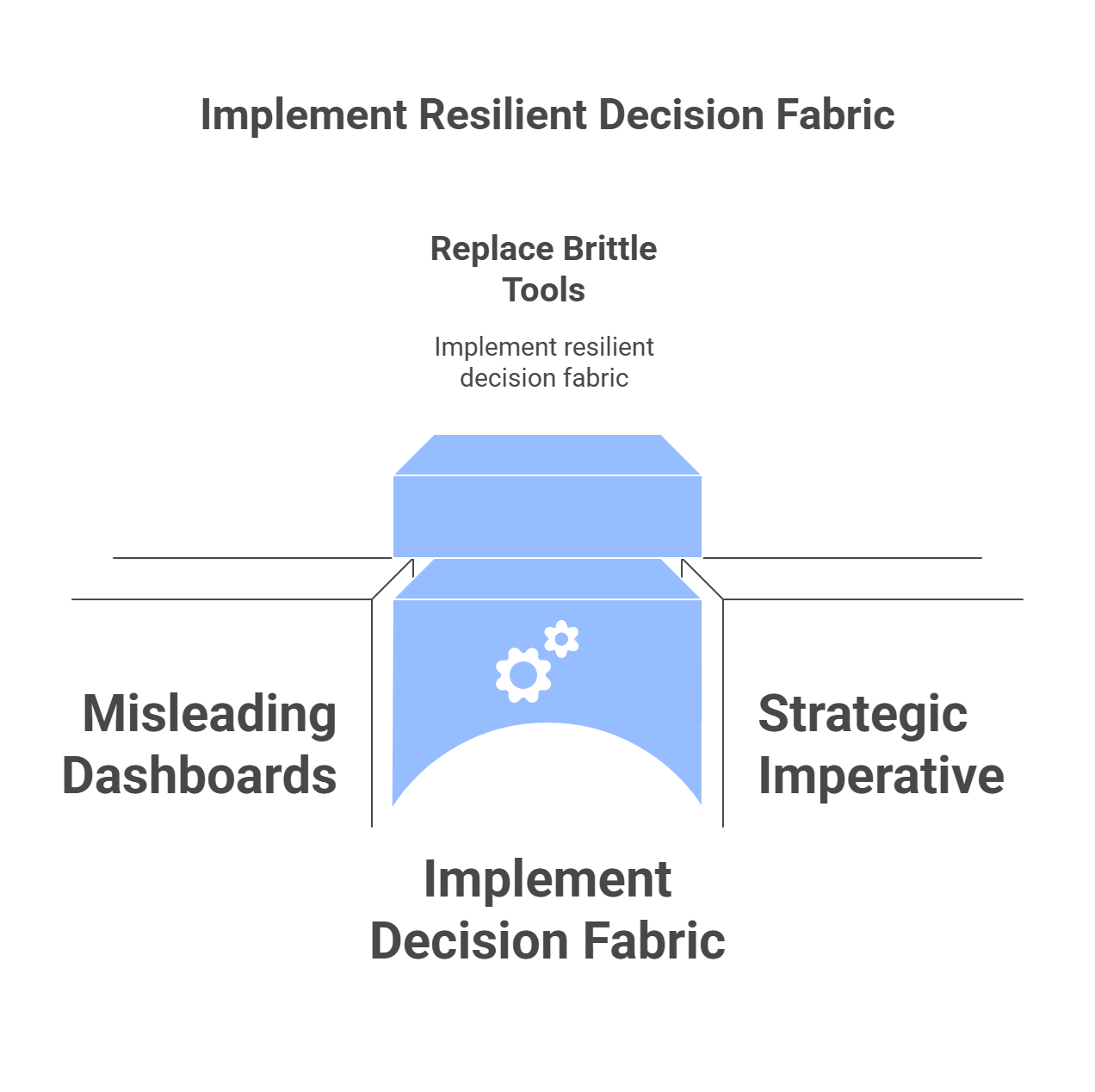
1) The Dashboard Delusion: Why Legacy Tools Fail in the New Era
In a high-rate environment where every basis point of performance matters, moving beyond superficial reporting is a strategic imperative. The reliance on generic, backward-looking dashboards has become a critical vulnerability for private equity firms, masking underlying operational weaknesses and creating a false sense of security until it is too late.
Walk into any PE-backed portfolio company, and you will find these dashboards. They are colorful… templated… and dangerously misleading. They are rearview mirrors, presenting lagging indicators devoid of actionable context. They tell you where the business has been, but offer no disciplined guidance on where it must go next to generate returns.
This weakness is compounded by the structural limitations of legacy PE strategies. The traditional Leveraged Buyout (LBO) model is being severely tested in an environment of sustained high interest rates. With the cost of debt surging, the reliance on financial engineering is no longer sufficient to generate target returns. The era where leverage did the heavy lifting is over, placing the full burden of value creation squarely on operational transformation.
Bottom line: Thriving in this new era requires replacing these brittle tools with a resilient, fund-level decision fabric.
2) Anatomy of the Decision Fabric: A New Operating System for Value
The "decision fabric" is a holistic, governed layer designed to institutionalize decision-making across the portfolio. It is not a single technology but a strategic fusion of data, disciplined processes, and specialized talent. Its purpose is to connect every operational move to a financial outcome, ensuring that value creation is a systematic, repeatable, and verifiable process.
It comprises four distinct layers that operate as a dynamic, intelligent system:
-
The Sensing Layer: From Alternative Data to Intelligent Insight
This foundational layer moves beyond traditional financial metrics to incorporate alternative data and AI-driven predictive analytics. Its function is to “sense what matters” by identifying hidden value creation opportunities and emerging risks before they are widely apparent. AI enhances due diligence by automating the manual review of vast data sets and improves deal sourcing by identifying promising targets others miss. This layer ensures investment theses are built on deep, proprietary insight.
-
The Action Layer: From Operations to Auditable Cash Flow
This layer translates insights into tangible operational moves with a clear “lineage to cash” for every initiative. It moves value creation beyond theoretical plans and into a disciplined execution framework managed with the rigor of a Project Management Office (PMO). Initiatives are treated not as strategic discussions but as production processes. The mandate is clear: treat price realization like the cheapest capex and run it with factory discipline. Every action is tracked against its direct impact on cash flow.
-
The Proof Layer: Building Buyer-Grade Evidence from Day One
This layer systematically creates an auditable trail of value creation. It operationalizes the “Exit-Back Playbook,” where the requirements for a successful exit are defined at signing and the business is then managed to produce the necessary evidence. Sophisticated buyers reward improvements they can verify in diligence, not promises. By building a repository of buyer-grade proof, this layer ensures all operational improvements are defensible and capable of commanding a premium.
-
The Learning Layer: Compounding Lessons Across the Portfolio
This final layer is the antidote to “The Graveyard of Good Intentions.” It captures and institutionalizes lessons from both successes and failures, codifying them into institutional capability rather than losing them to team turnover. Key insights—a successful turnaround or a failed market entry—are scaled across the portfolio, preventing the repetition of costly mistakes. This transforms individual experience into a durable competitive advantage.
A virtuous loop: Proof → Learning → Sensing → Action. The Proof Layer’s auditable data informs the Learning Layer, which refines the predictive models in Sensing, enabling more precise interventions through Action.
3) Architectural Blueprint: The Three Pillars of the Decision Fabric
Building a decision fabric is not an accident; it requires a deliberate, architectural approach. Turning this concept into an operational reality depends on three essential pillars:
Pillar 1 — Technology & Data Infrastructure
The first pillar is the creation of “Digital Alpha.” This demands a strategic shift away from fragmented bots and siloed dashboards toward an integrated technology stack. Capital is now abundant, but clarity is scarce. This integrated stack is the solution to that scarcity, creating a central nervous system for the fund that supports the entire investment lifecycle—from AI-enhanced deal flow and diligence, through automated portfolio oversight, and into data-driven exit planning.
Pillar 2 — Talent & Governance
Technology alone is insufficient; it must be paired with a new talent strategy built for the “Human-AI Partnership.” This demands new skill sets, such as those outlined in the VALUE FIRST Skill Matrix, that equip professionals for an AI-first market. Governance is anchored by the “Super Operating Partner,” a role transformed from a symbolic operator to an investor-builder with authority, cadence, and a platform for capability deployment. This ensures insights are translated into action consistently across the portfolio.
Pillar 3 — Disciplined Processes & Cadence
The final pillar replaces reactive oversight with proactive, structured engagement. This requires implementing disciplined frameworks—such as a PMO approach to value creation—that establish a rhythm and cadence for execution. This structured engagement turns strategic intent into consistent, measurable outcomes. By instilling this execution discipline, firms create a reliable engine for performance improvement that transforms a value creation plan from a static document into a living blueprint.
Together, these pillars form the robust architecture needed to support a high-performing decision fabric.
Conclusion: Decisions as the New Alpha
In the current market cycle, dashboards and disconnected tools do not create alpha—superior decisions do. Financial engineering is now table stakes; the new source of alpha comes from becoming an industrial builder of durable, verifiable value. The fund-level decision fabric is the definitive competitive advantage in this landscape. It is not just a process but a core firm asset that generates compounding returns on insight. By building a fabric where every lesson compounds and every action has an auditable path to cash, firms institutionalize excellence and secure their ability to deliver superior returns for the decade to come.




